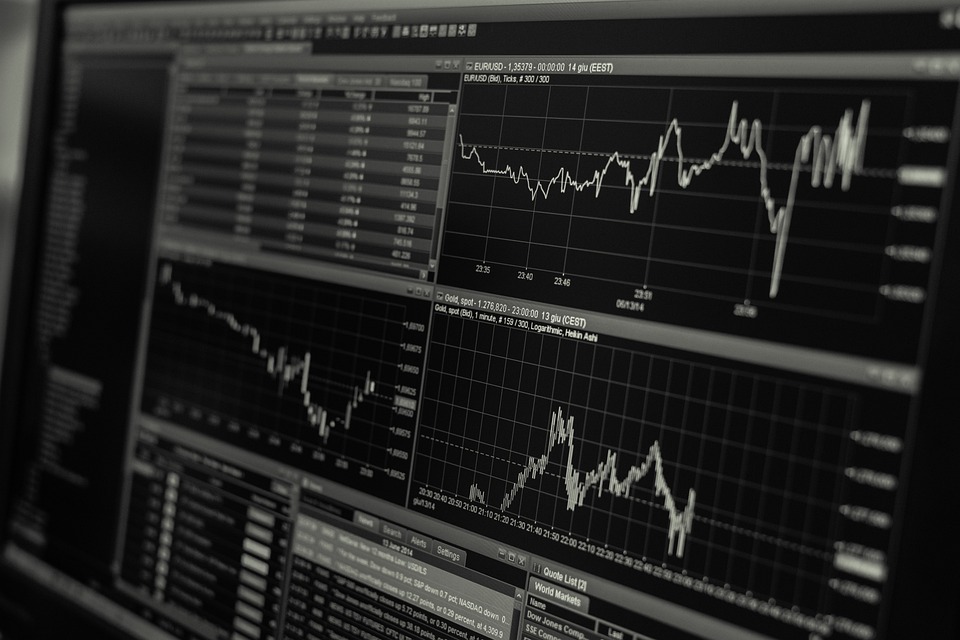Stock Market Outlook For 2024: Why There Could Be Problems Ahead

Image source: Pixabay
Stock Market Outlook for 2024 Could Change From Bullish to Bearish
The stock market is roaring these days.
If you read the mainstream financial press or listen to well-known strategists and analysts, you’ll see that they’re bullish and have a rosy stock market outlook for 2024. With so much bullishness around, it’s important that investors ask: What are the odds of them being wrong? Could the stock market turn bearish?
Here’s the thing: the fundamentals aren’t looking that great, and it could be just a matter of time before we see strategists and analysts change their views on the direction of the stock market in 2024.
Charts Say Stocks Could Surge in 2024
Digging into the details…
There are a few factors that matter when trying to predict the direction of the stock market. You must look at valuations, the overall economic outlook, corporate earnings expectations, investor sentiment, and so on and so forth.
As it stands, if you look at the charts, they suggest that the stock market outlook for 2024 is bullish. Take a look at the chart below. It plots the performance of the S&P 500 index.
The S&P 500 is currently trading around its all-time highs. Trend indicators like the 50-week moving average (MA) and 200-week MA suggest that the stock market is trending upward.
The S&P 500’s moving average convergence/divergence (MACD), which is a momentum indicator, shows that stock traders are buying and could take share prices higher.

Chart courtesy of StockCharts.com
Bad News Is Not So Bad Anymore
Investor sentiment has started to get into irrational territory. Investors see good news as being positive for them, and bad news essentially doesn’t mean much to them.
One example of irrationality among investors is how they treat companies when they report their financial results. Usually, when companies report better-than-expected results, you see investors buy their shares. If the companies fail to meet expectations, you tend to see investors ditch their shares.
What’s happening now? We’re in the midst of the fourth-quarter 2023 earnings report season.
With the S&P 500 companies that have reported positive earnings surprises (better-than-expected results) so far, their stock prices have, on average, increased by 1.5% from two days before their earnings releases through two days after their earnings releases. (Source: “Earnings Insight,” FactSet Research Systems Inc, January 26, 2024.)
The five-year average price increase on positive earnings surprises is one percent.
With the S&P 500 companies that have reported negative earnings surprises (worse-than-expected results) for the fourth quarter of 2023, their stock prices have, on average, declined by just 0.1% from two days before their earnings releases through two days after their earnings releases.
The five-year average price decline on negative earnings surprises is 2.3%!
Stock Valuations Getting Expensive
While sentiment has been optimistic, investors have been paying top dollar for stocks. This shouldn’t be taken lightly whatsoever.
The S&P 500 is trading at a forward 12-month price-to-earnings (P/E) ratio of 20.0. This is above the five-year average of 18.9 and the 10-year average of 17.5.
But don’t just stop there: take a look at the stock market’s cyclically adjusted price-to-earnings (CAPE) ratio. Essentially, the CAPE ratio is the P/E ratio adjusted for business cycles and inflation.
In September 2023, the CAPE ratio of the stock market stood at 30.81. (Source: “U.S. Stock Markets 1871-Present and CAPE Ratio,” Yale University, last accessed February 1, 2024.)
In January, the ratio was 33.02. (Source: “Shiller PE Ratio,” mltpl, last accessed February 1, 2024.)
Keep in mind that the current ratio by itself really means nothing; you have to compare it to the historical average and how it looked during previous stock market peaks.
The long-term average of the CAPE ratio is about 17. That means the stock market is currently trading about 94% above its historical average.
During previous stock market peaks, the only time the CAPE ratio surged as high as it is now was during the tech bubble. It wasn’t even this high prior to the stock market crash of 2008–2009, prior to the crash of 1987, during the 1970s, or even prior to the Great Depression.
Stock Market Outlook for 2024 Bullish for Now, but That Could Change
The stock market outlook for 2024 seems bright for now, but the current valuations say the market is in dangerous territory.
I can’t help but say this: don’t get too complacent. If you look back, you’ll learn that almost all stock market tops have formed at the time of peak optimism, when the outlook was rosy and valuations were high—something like what we’re seeing these days.
Moreover, whenever selling begins, it’s never really a pretty sight. They say, with the stock market, “it’s always elevator down and stairs up,” meaning losses happen fast and gains happen slowly.
More By This Author:
2024 Outlook for Gold Prices: Demand From India & China Could Make Gold Bugs HappySevere Recession For U.S. Economy Could Be Ahead: Don’t Ignore Consumers
2024 Outlook For Silver Prices: Great Opportunity In The Making
Disclaimer: There is no magic formula to getting rich. Success in investment vehicles with the best prospects for price appreciation can only be achieved through proper and rigorous research and ...
more


